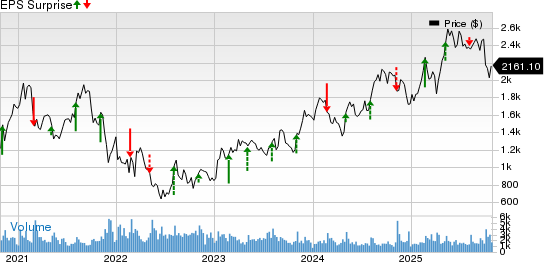Understanding the Return on Assets (ROA) Ratio
The return on assets (ROA) ratio serves as a key financial metric that reveals how well a company utilizes its assets to generate profit. By comparing net income to total assets, this ratio provides valuable insights into a company’s management efficiency. A higher ROA suggests effective asset use, a trait that investors and analysts often examine when comparing companies across similar industries.
What Is the Return on Assets (ROA) Ratio?
The return on assets (ROA) ratio serves as an essential tool for investors and business owners to determine how well a company is leveraging its assets to produce profit. This calculation can reveal much about a company’s operational efficiency and profitability.
To calculate ROA, divide a company’s net income by its total assets. The percentage derived from this calculation shows how much profit is generated per dollar of assets owned. A variety of factors influence a company’s ROA, including management of assets, cost control measures, and revenue generation capabilities.
Generally, companies that manage their assets effectively see higher ROA figures. Organizations that minimize operational costs while maximizing revenue typically improve their ROA. Notably, ROA can vary significantly between industries due to different levels of asset usage and capital intensity.
How Is the Return on Assets Ratio Calculated?
To calculate ROA, you need two figures: net income and total assets. The formula is:
ROA = Net Income / Total Assets
Net income represents the profit a company earns after deducting all expenses, taxes, and costs from total revenue. Total assets account for everything owned by the company, such as cash, inventory, property, and equipment.
For instance, if a company has $2 million in net income and total assets of $20 million, its ROA would be calculated as follows: $2 million / $20 million = 10%. This means the company generates ten cents in net income for every dollar of assets.
A higher ROA indicates greater efficiency in converting investments into net income. Investors often view a high ROA as a sign of a potentially lucrative investment, highlighting effective resource management. Conversely, a lower ROA might signal inefficiencies, warranting a deeper investigation into the company’s operations. Comparisons against industry averages are crucial, as different sectors display varying asset use and profit margins.
Industry type significantly impacts a company’s ROA. Asset-heavy industries, such as manufacturing, often report lower ROA compared to service-oriented sectors.
Moreover, economic conditions, management strategies, and the adoption of new technologies can also influence asset use efficiency. Companies that innovate and streamline operations typically enjoy better ROA, showcasing improved asset management.
ROA vs. Return on Equity (ROE)

Both ROA and return on equity (ROE) are key ratios used to evaluate a company’s profitability. While ROA focuses on how effectively a company utilizes its total assets, ROE specifically measures how well a business uses shareholders’ equity to generate earnings. Each metric provides unique insights, but they serve different analytical purposes regarding a company’s financial health.
ROA offers a comprehensive look into a company’s resource management, including its use of debt. In contrast, ROE zooms in on the returns produced from money invested by shareholders. Understanding these distinctions is critical for investors aiming to assess a company’s financial framework.
Debt’s impact also differentiates ROA from ROE. Highly indebted companies may show lower ROA because their total assets include both debt and equity. However, they could still display a high ROE if they use borrowed funds effectively to increase profits. This leverage effect can enhance ROE, making it appear more favorable while indicating weaker overall asset efficiency.
Limitations of the ROA Ratio
One notable limitation of the ROA ratio is its variability across industries. Asset-heavy sectors like manufacturing or utilities usually report lower ROA ratios compared to asset-light industries such as technology or service sectors. This difference complicates direct comparisons between companies within diverse industries using the ROA ratio alone. When evaluating a company’s performance through this metric, investors should consider industry-specific standards and context.
Additionally, the ROA relies on the book value of assets as listed on the balance sheet, which may not accurately represent current market values. This is particularly true for businesses with significant intangible assets, like patents or trademarks, which might be undervalued on the balance sheet.
ROA also reflects a short-term perspective, evaluating a company’s performance over a fixed period, typically a fiscal year. This short-term focus can overlook strategic initiatives that may not yield immediate profitability but can foster future growth. For example, companies investing significantly in research and development may show a temporarily lower ROA, which does not imply poor management or inefficiency.
Conclusion

The return on assets (ROA) ratio sheds light on how effectively a company utilizes its assets to create profit. By calculating ROA, investors and analysts can draw comparisons among businesses within the same sector, providing clarity on which companies are best at optimizing their resources. Although ROA is one of many financial metrics, such as return on equity, it plays a crucial role in company and investment analysis.
Investment Planning Tips
- A financial advisor can help you manage risk for your portfolio. Finding a financial advisor doesn’t have to be complicated; SmartAsset’s free tool connects you with up to three vetted financial advisors in your area. You can schedule a complimentary introductory call with each to choose the best fit for your needs. Start your journey to achieving financial goals today.
- Consider diversifying your portfolio with ideas from a roundup of 13 different investments.
Photo credits: ©iStock.com/RicardoImagen, ©iStock.com/fizkes, ©iStock.com/Delmaine Donson
The post What Is the Return on Assets (ROA) Ratio? appeared first on SmartReads by SmartAsset.
The views and opinions expressed herein are the views and opinions of the author and do not necessarily reflect those of Nasdaq, Inc.








